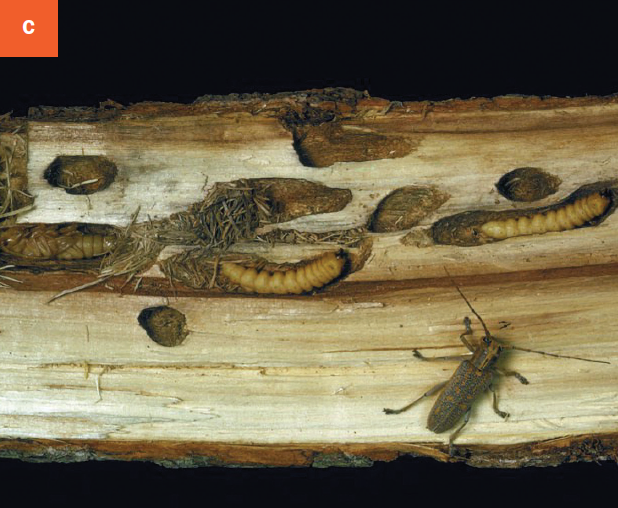Poplar Borer
Saperda calcarata
HOST Aspen, cottonwood, poplar
DAMAGE/SYMPTOMS The larvae bore into the sapwood and girdle trees. Heavily infested trees will establish a blackish stain on the bark below the attack. During high winds, branches can break off, which can allow for further invasion of wood rot.
LIFE CYCLE The adults are active from June through August. The females feed on the leaves and shoots for a couple of weeks. They then lay eggs on the surface of the bark, and the larvae will ultimately move into the sapwood. The larvae are a cream or yellow color, and they can reach over an inch long when mature. The larvae pupate in late spring beneath the bark. Adults start emerging in June. The life cycle of this beetle can reach up to three years.
MANAGEMENT Make sure the tree receives adequate water. Plant aspen trees in large groups so the trunks can be shaded. If the tree is heavily infested or showing major damage, it should be removed as it can negatively affect other trees in the area. For biological control, there are insect-attacking nematodes that can be injected into the borer holes. Contact insecticides can be sprayed on the trunk prior to egg laying to prevent further infestation in the tree. Applications should concentrate mainly around infested areas of attack, if any, and on the middle areas of the tree. Systemic insecticides have shown limited success in controlling larvae that are already present in the tree. Some active ingredients include dinotefuran, bifenthrin, permethrin, and carbaryl. Trunk injections can be done with the active ingredients emamectin benzoate and azadirachtin.
A Poplar borer adult. B Frass from insect tunneling. C Multiple stages of the poplar borer under the bark.



